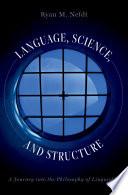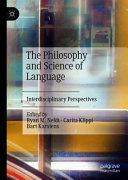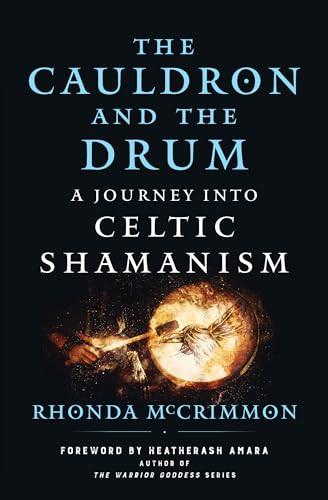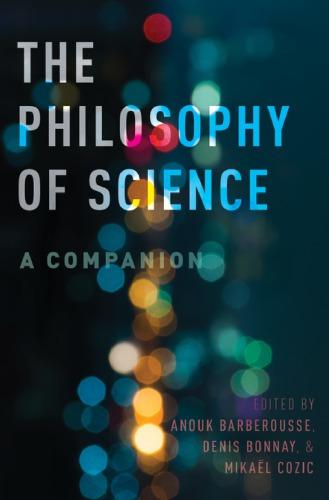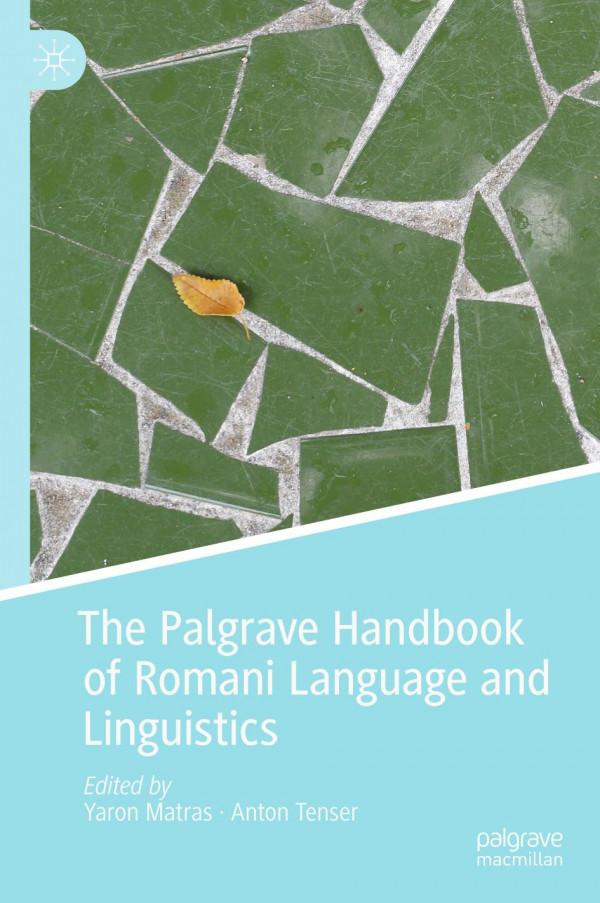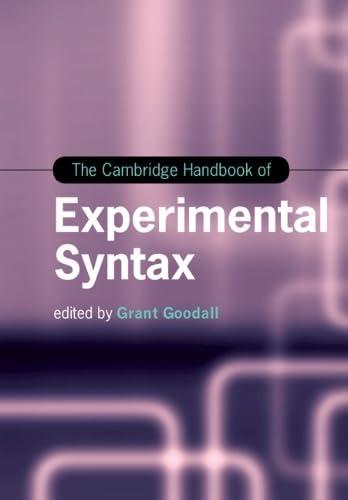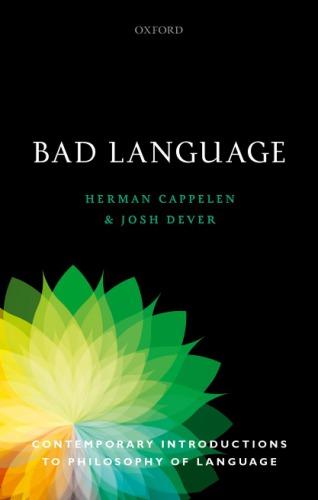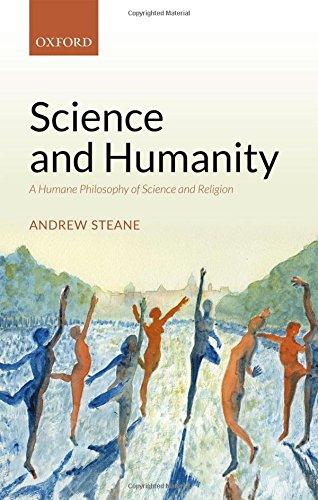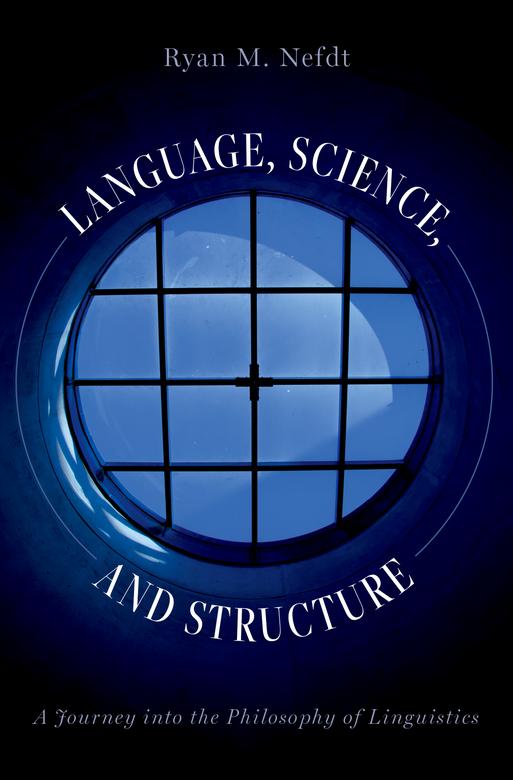Language,Science,and Structure
AJourneyintothePhilosophyofLinguistics
RYANM.NEFDT
OxfordUniversityPressisadepartmentoftheUniversityofOxford.Itfurthers theUniversity’sobjectiveofexcellenceinresearch,scholarship,andeducation bypublishingworldwide.OxfordisaregisteredtrademarkofOxfordUniversity PressintheUKandincertainothercountries.
PublishedintheUnitedStatesofAmericabyOxfordUniversityPress 198MadisonAvenue,NewYork,NY10016,UnitedStatesofAmerica.
©OxfordUniversityPress2023
Allrightsreserved.Nopartofthispublicationmaybereproduced,storedin aretrievalsystem,ortransmitted,inanyformorbyanymeans,withoutthe priorpermissioninwritingofOxfordUniversityPress,orasexpresslypermitted bylaw,bylicense,orundertermsagreedwiththeappropriatereproduction rightsorganization.Inquiriesconcerningreproductionoutsidethescopeofthe aboveshouldbesenttotheRightsDepartment,OxfordUniversityPress,atthe addressabove.
Youmustnotcirculatethisworkinanyotherform andyoumustimposethissameconditiononanyacquirer.
LibraryofCongressControlNumber:2023930572
ISBN978–0–19–765309–8
DOI:10.1093/oso/9780197653098.003.0001
PrintedbyIntegratedBooksInternational,UnitedStatesofAmerica
ForAnastasia, Мояукраинскаярадуга
viii contents
5.2Unbanishingthe‘LinguisticCommunity’
6.1 eNaivePictureand reeNaturalisticDesiderata
6.3AStructuralApproachtoLinguisticEntities
6.3.1LinguisticStructures,Again
6.3.2WordsasPositions-in-RealPatterns
6.3.3Conclusion
7.StructuralRealismandtheScienceofLinguistics
7.2.1FromPhraseStructuretoPhaseStructure
7.3.1StructureandInvariance
7.4 eProblemofMultipleGrammars
7.4.1MultipleModelsIdealisation
7.4.2MultipleGrammarsandMultipleReductions
8.LanguageattheInterface
8.1ANoteonComplexSystems
9.LanguageandCognitiveScience
9.1 eDilemma
9.2 eStudyofMindinLanguage
9.2.1AShortHistoryofMentalisminLinguistics
9.2.2 eInceptionofCognitiveScience 174
9.2.3Language,Representationalism,Computationalism 179
9.3Intersection,Integration,andArchitecture 180
9.3.1LessonsfromSystemsBiology,Again 182
9.3.2 eCaseforLanguageattheIntersection
9.4UnifyingCognitiveStructures
Preface
isbookisambitiousonanumberoffronts.Asitsprimaryobjective,it endeavourstoo ernovelinsightsintooneofthemostcomplexquestionsof humanexistence,i.e.,whatislanguage? eprimarymethodofillumination istheinvestigationofthebesttoolinourcurrentarsenal,thescienceof linguistics.Insearchofauni edframeworkforansweringdeepphilosophical questions,Idelveintoissuesincurrentlinguistictheory,formallanguage theory,cognitivescience,andthephilosophiesofmathematicsandscience morebroadly.
Iadvocateathoroughgoing ontic structuralrealistapproachtothemany interconnectedissuesattheintersectionbetweenthephilosophiesoflanguage, linguistics,andscience.WhereIdoventureintometaphysicalterritory,I adoptanunabashedlynaturalisticstance(Ladyman&Ross2007;Maddy 2007;Ladyman,Ross&Kincaid2013;Machery2017).Questionsofthe ontologicalstatusoflinguisticitemslikewords,themetaphysicalimportof formalgrammars,orthecognitivestructureoflanguagewillbepursuedin accordancewithwhatourbestsciencehastosayonthetopic. escience inquestionwillsometimesgobeyondlinguisticstoincludebiology,cognitive neuroscience,andmathematics.
Manyofthedebatesinthephilosophyoflinguisticshaveahistoryinthe riseofgenerativegrammar,o endescribedasascienti crevolution. us, foundationalpositionshavetakenonapartisan avourwiththoserepresenting thevariouscampsholdingontoprede nedoracceptedtheoreticalallegiances. Inthemid-twentiethcenturyfeudswereestablishalongphilosophicalaswell asideologicallineswithlittleinthewayofconciliation.However,thingshave simmereddowninrecenttimes,openingupthepossibilityoffreshdialogue andnovelexplorationintothenatureofthe eld.Inaddition,thereisaplethora ofnewresults,methods,andtheoreticalalternativesatourdisposal.Iswearno fealtytoanyparticulartheoreticalpersuasioninthefollowingtext.Ihopethis o erssomesolacetothosewhodo.Butmyargumentswillunapologetically favouraphilosophyofscienceperspectiveonalltheissuesunderdiscussion. Idonotconsidermyselfamentalist,platonist,nominalist,orapluralist. Infact,inthe rsttwochaptersIadvocatedoingawaywiththeseunhelpful labels.Intheirstead,Io eranapproachwhichplacestheroleoflinguistic
x preface
structuresatthecoreofthe eld,oneIbelievetobefaithfultolinguistic practiceaswellasphilosophicallyfruitful. isistheviewIdevelopincareful detailfortherestofthebookinthespiritofscienti cphilosophy.Indoingso, InotonlydiscusssyntaxandsemanticswithingenerativelinguisticsbutIalso presentevidencefrommodel-theoreticgrammars,distributionalapproaches, embodiedcognitivelinguistics,andneuralnetworkarchitectures. ereis somethinginitforthewholefamily,evenifcertaincousinshavebeenlong estranged.
Naturally,thebookaimsatthoseinterestedinthefoundationsoflinguistics andthosewhoworkonthenatureofnaturallanguagemorebroadly,bothin termsofcontemporaryandhistoricalissues. isisnottosaythatargumentsI makearenotgeneralisabletoother elds,infactmanyaredrawndirectlyfrom them.Nevertheless,Ibelievethattherearebothlinguisticallyuniquepuzzles andclaimsthatare suigeneris tothe eld.Despitethisbelief,thelargeraim targetsthephilosophyofscienceandspeci callythephilosophyofthespecial sciences.Ihopethatthisworkcanconvincescholarsworkinginthoseareasof therichterrainthatisthephilosophyoflinguistics.
RyanM.Nefdt
CapeTown,SouthAfrica
Acknowledgements
Ihavetostartmyenumerationofthankswithmentionofthefunding organisationsthathavemadethisresearchprojectpossible.Iamgreatly indebtedtotheViceChancellor’sFutureLeaders2030programmeatthe UniversityofCapeTown,theNationalResearchFoundationofSouthAfrica, andtheOppenheimerMemorialTrustforgenerouslysupportingmeoverthe pasttwoyears.
Tworesearchfellowshipsespeciallyprovidedmewiththenecessarytime, space,andcollegiateexpertiseforthecompletionofthemanuscript. e rst, asafellowattheCenterforthePhilosophyofScienceattheUniversityof Pittsburgh,helpedmegroundtheworkinthephilosophiesofscienceand cognitivescience. esecond,atthedepartmentofLinguisticsandPhilosophy atMIT,shoredupthelinguisticselementsofthemonograph.Iamextremely gratefulforbothopportunitiesandtoEdouardMacheryandAgustínRayofor makingthempossiblerespectively.
Next,Iwouldliketothankaudiencesatvariousuniversitiesatwhich IpresentedpartsofthisbookincludingMIT’sLinguisticsandPhilosophy department,theNewYorkPhilosophyofLanguageworkshop,theKleiner LectureSeriesattheUniversityofGeorgia,thework-in-progressgroupatthe CentreforHumanitiesEngagingScienceandSocietyinDurham,theDepartmentofPhilosophyColloquiumattheUniversityofMiami,theworkshop onRealPatternsandCognitionattheSanteFeInstituteinCalifornia,and theCenterforthePhilosophyofScienceattheUniversityofPittsburgh.To thelastoftheseIamespeciallygrateful,astheyhostedamuchneeded(for me)manuscriptreadinggrouponanearlydra ofthismonographwhileI wasafellowthere.WithouttheguidanceandinsightfulcriticismofEdouard Machery,KateStanton,KevinDorst,AlnicaVisser,TravisMcKenna,and HannahRubinIdon’tthinkthebookwouldbeintheshapeitisnow.
Myintellectualdebtsgomuchfurther,ofcourse.Geo Pullumhasbeenan inspirationtothisworkandmygeneralearlycareerpathinthephilosophyof linguistics.Conversationswithhimovertheyears,whichhaverangedfrom co eechatsinBraunschweigtolunchinEdinburghtoastrollalongthe PotomacinAlexandria,haveinformedthewayIthinkaboutthesubject,its
acknowledgements
historyandphilosophy.Hehasalsoreadovermuchofmyworkando ered necessarycritiqueatimportantmoments.
Verysimilarly,ZoltánSzabóhasbeenaconstantsourceofsupportand guidancewhenevercalledupon.Zoltáninspiredmetowritethisbooka whileagoandhassincesupporteditscontentandstructuretremendously.I’ve learnedsomuchfromhisexpertiseinlinguisticsandphilosophy. oughhe didn’ttellmehowharditwouldbetowrite!
Myfellowphilosopheroflinguistics,GabeDupre,deservesspecialthanks forreadingthroughtheentiremanuscriptando eringinvaluablecomments intermsofbothgenerativelinguisticsandthephilosophyofscience.His commentsandcorrectionsonmyinterpretationofaspectsofgenerativetheory wereespeciallyuseful.
erearesomanymorepeopletothank.Tothephilosophersofscience,I thankStevenFrenchwhointervenedinanearlypaperonstructuralrealismin linguisticsofmine,whichledtotheavoidanceofmanyerrorsandhopefully aproducthewouldbehappytoacceptwithinhisframework.DonRossread theentire rstdra withsuchclosescrutinythathiscommentshavedirectly impactedthe nalversioninmyriadpositiveways.IthankLarrySklarwho rst introducedmetothewondersofthephilosophyofscienceinallofitsrigour andmajesty(atatimewhenIperhapswasn’tquitereadytoappreciateit). Andmyfriend,HaroldKincaid,hasprovidedsomanyinvaluableinsightsnot onlyintothephilosophicalgoings-onofthepresentmonographbutacademia, publishing,andgenerallife.Iamsoverypleasedtohaverealisedthattherewas aphilosopherofsuchnotehidingintheSchoolofEconomicsattheUniversity ofCapeTown.
IthankmycolleagueBernhardWeissforgivingachancetoayoungscholar fromanunderrepresentedgroupinphilosophy(andacademiainSouthAfrica) whenIwasstillveryconfusedaboutthenatureofthe eld.Wehavebecome greatfriendssincethenbut,thankfully,hehasnevershiedawayfromtelling mewhenmyphilosophyneedswork.Iamabetterscholarforit.I’malso gratefultoJoshDeverandPatrickGreenoughforbeingexcellentmentors duringmyearlycareerdaysaswellastomy rstformallinguisticsteacher andMScsupervisor,HenkZeevat,whotookmethroughtheannalsofHPSG, DependencyGrammar,Optimality eory,andcomputationalapproachesto language.IalsothankTerryLangendoen,ReinhardBlutner,JardaPeregrin, Je Pelletier,RobStainton,LouiseMcNally,DoritBar-On,GiosuèBaggio,Yuri Balashov,andMichaelKacforallchallengingmetodevelopmythoughtsin numerouswaysoverthecourseofwritingthisbook.Ioweadebtofgratitude tomyresearchassistant,MattWhite,forhisfastidiousattentiontodetail,and
acknowledgements xiii
PeterOhlinandPalomaEscovedoatOxfordUniversityPressforallofthehelp andsupportonthepublishingsideofthings.
Lastly,Iwouldlikethankmyfamilyforbelievingthattherewasabook inmeallalong.Mymothersawitearlierthananyone,includingme.Her unendingsupportdrovemeforward.Andmywife,Anastasia,whoismy constantintellectualinterlocutorandchallenger,Imighthavewrittenthisbook butIhaveyettowinadebatewithher!Herbrilliance,advice,andsupportgave mehopethatthisprojectcouldachievefruition,evenwhenIdoubteditmyself.
Introduction
ephilosophyoflinguisticsisafascinating eldofinquirywhichdevelopsinsightsfromanastonishingrangeofrelated elds,someobviousand othersmuchlessso.Historically,issuesofontologyhavetakenonalmost metonymousstatus.Morerecently,however,thispurviewhasbeenextended toincludemethodologicalconcerns,theorycomparison,andinterdisciplinary connections. us,thereareatleasttwowaysinwhichtoaccessthegeneral topic,whatIcallthe language- rstmodelandthe science- rstmodel.In theformer,the eldsofphilosophicalsemantics,formallogic,andperhaps rst-orderlinguisticstakeprecedence.Inasense,suchanapproachamounts toanideasimilartothatof‘linguisticphilosophy’practisedatdi erent timesindi erentwaysacrossthetwentiethcenturyandexempli edbythe ordinarylanguagephilosophymovement,i.e.,studyinglanguageisoneway (perhapstheonlyway,ifyouwereanadherentofthe‘LinguisticTurn’)of studyingthenatureofthethingswhichlanguagedescribes.ItakeJerrold Katztohavebeenthechiefadvocateofsuchaviewinlinguistics. e centralideaisthatlinguisticso ersgenuineinsightsandpossiblysolutions tophilosophicalproblems(andforhim,evensettlesthelongstandingdebate betweenRationalistsandEmpiricistsinfavouroftheformer)orasheputit, “linguistictheoryincorporatesanswerstosigni cantphilosophicalproblems” (Katz1965:590).1
escience- rstapproach,ontheotherhand,treatslinguisticsasascience andthephilosophyoflinguisticsasasub eldofthephilosophyofscience. isisthegeneralapproachtakeninthisbook,followinginthetraditionof LadymanandRoss(2007),Maddy(2007),andscienti cphilosophyingeneral (Ross,LadymanandKincaid2013). us,thetoolsofscienti cmodelling, debatesonscienti cprogress,realism,andstructuralrealism interalia will informthegeneralmethodologygoingforward.However,insomechapters thelineswillinevitablybeblurred.Forinstance,inChapter5,followingon fromtheChomskyanthemeofusingthestudyoflanguageasaconduitto thestudyofmind(so-called‘mentalism’),Iwilladvocatethatthestudyof linguisticstructurecanilluminatetheontologyofstructuresthemselvesor ratheraparticularkindofbiologicalstructure.Indeed,thetwoapproaches
Language,Science,andStructure.RyanM.Nefdt,OxfordUniversityPress. ©OxfordUniversityPress2023. DOI:10.1093/oso/9780197653098.003.0001
language,science,andstructure arenotincompatible.Lookingtolinguisticsasameansofilluminating philosophicalproblemsisstillpossibleonmyapproachinthesamewaysthat thephilosophyofbiologyorchemistrymightattempttoshedlightonproblems inmetaphysics.
Inwhatfollows,Iprovideaguidedtourofthegeneralphilosophyof linguisticslandscapewhilepresentingthemainstructuralrealistprojectof thecurrentbookandthesub-problemsithelpstosolvealongtheway. e storythatwillunfoldinthesubsequentpagesofthevariouschapterswillnot onlytrackahistoricalnarrativeofthechangingconceptsoflanguageacross thetwentiethcenturyandintothetwenty- rstbutalsodevelopauni ed structuralistpictureoflinguisticsitself,inlinewithprominentsuchaccounts inthephilosophiesofmathematicsandsciencebutdivergingfromthemin uniquewaysinresponsetotheuniquesubjectmatterathand.Necessary technicalaspectsoflinguistics,formallogic,cognitivescience,andarti cial intelligencediscussedinsodoingwillbeexplainedandneverassumed.For now,abriefsurveyoftheterrain.
1.1 ePhilosophyofLinguistics
ephilosophyoflinguisticsisabroad eldwithmanydistinctavenuesof entry.At rstblush,onemightconfuseitsscopewiththatofthephilosophy oflanguage.Indeed,thelanguage- rstapproachrealisessomeversionof thispossibility.AsSoamesputsit,the“[p]hilosophyoflanguageis,above allelse,themidwifeofthescienti cstudyoflanguage,andlanguageuse” (2010:1).Hegoesontoaddthat“[t]hecentralfactaboutlanguageisits representationalcharacter”(Soames2010:1). esestatementshighlighttwo aspectsofthephilosophyoflanguagethatarerelevanttoourstudy.One aspectbroughtoutbytheideathatthephilosophyoflanguageisamidwife tothescienti cstudythereof,presumablylinguistics,isthattheformer disciplineprecisi esde nitions,makesdistinctions,andgenerallyclearsthe conceptualgroundforlinguistictheory.Indeedthissoundssimilartothe remitofthephilosophyoflinguisticsorwhatit should bedoingatleast. esecondclaim,thatthecentralfeatureoflanguageisitsrepresentational nature,underliesmuchofthefocusonmeaning,beitsemanticorpragmatic, inthephilosophyoflanguage.Herethereisacleardeparturefromthe philosophyoflinguistics,asIpresentit.Forinstance,ingenerativelinguistics, syntaxorthecomputationalsystemtakesprecedenceoverothersystemsand thusthephilosophyofgenerativelinguisticstypicallyinvolvesre ectionon
thataspectofthetheoreticallinguistics(asiswitnessedinLudlow’s(2011) titularcontributiontothesubject).Moreover,syntax,phonology,morphology, semantics,andtheinterfacesbetweenthemareallthepropersubjectmatter ofthephilosophyoflinguisticswithinandbeyondthegenerativetradition. Inaddition,issuesofthepsychologicalrealityofgrammars,thesigni cance ofpsycholinguisticevidenceinlinguistictheorising,andthemathematical underpinningsofdi erentformalismsallformanaturalpartofourstudybut seemtobeoutsideofthescopeofthephilosophyoflanguageproper.
Putinanotherway,thephilosophyoflinguisticsisthephilosophical investigationofaparticularkindofscienti ctheory,namelyalinguistictheory. Asphilosophersoflinguisticsweareinterestedinlanguageonly indirectly asitpertainstohowwestudyandmodelit.Ahelpfulanalogymightbe therelationshipbetweenthephilosophyofphysicsandmetaphysics. e formerstudiesphysicalrealityonlythroughaninvestigationofthesciencethat describesit.Conversely,metaphysicsisnomorethe‘midwife’ofphysicsthan thephilosophyoflanguageisthatoflinguistics.Ofcourse,thisisacriticism ofanalyticor‘neoscholasticmetaphysics’withinnaturalisedmetaphysics (LadymanandRoss2007)andoneIendorsefullyinthisbook.Infact,ifthere isanymidwiferygoingon,itwillbedone via thepresentmethodology.2 In essence,thepositionItakeamountstoacommitmentto naturalisedphilosophy oflanguage.
Ofcourse,nophilosophicalboundaryiscompletelywithoutexceptions. e currentstateofmetasemanticsorthephilosophyofsemanticslivesinboth theworldsofthephilosophyoflanguageandthatoflinguistics. enature ofreference,themechanismswhichgroundourmeaningfuluseoflanguage, andtheimplicationsofmathematicalformalismssuchasthoseinvolvedin model-theoreticsemanticsarecentraltothisemerging eld,astheyshould be.Chapter8ofthisbookdelvesintothoseissuesandattemptsauni cation withtheclaimsmadeaboutsyntaxandphonologyinotherparts. isisalltosaythattheunderlyingphilosophicalframeworkofthe presentresearchprojectshouldbekeptdistinctfromthatofmoretraditional approachestolanguageinphilosophy,especiallywherethoseapproachesdid notcon rmtothenaturalisticstancetakenhereandelsewhere.Inthenext section,Iwillfurtherexemplifytheparticularitiesofthekindsofquestions thatthephilosophyoflinguisticsasks,beforegivinganoverviewofthebook tocome.
language,science,andstructure
1.2GenerativeandNon-GenerativeFrameworks
Generativelinguisticsisstillbyandlargethedominantforceintheoretical linguistics.Naturally,nosimplecharacterisationofsuchall-encompassing scienti cparadigmcanbereadilyprovidedattheoutset.Infact,much ofthepresentworkisdevotedtoprovidingpreciselysuchanaccountof linguistictheoryingeneral.Nevertheless,muchlikerelativisticphysicsor evensomethingmoreamorphouslikepoliticalrealisminpoliticaltheory, therearecoretenetsaroundwhichmostpractitionersoperate.Inthissection, I’llbrie youtlinethebasictenetsofgenerativegrammarandusetheseas mechanismsfordistinguishingbetweeno shootsoftheresearchprogramme andnon-generativeframeworks.However,Chapter2willrevisittheontology ofgenerativelinguistics,whileChapters4,5,and7willfurtherdeveloptheview intermsofitsscienti cunderpinnings,treatmentofindividuallexicalitems (aswellasthoseofotherframeworks),andhistoricalrootsintheoverarching cognitivescienti cproject.
ereare vecorecharacteristicsofthegenerativeprogrammeinlinguistics whichIwanttohighlighthere.3 Ishouldnotethatthesecharacteristicsdo notformanecessaryandsu cientsetorde nitionatthelevelofresearch traditionbutratheraguidetothetheoreticalunderpinningsofsubsequent researchprogrammesandhowdi erentspeci ctheoriesdevelopedfromcore theoriesorpropositionsinthesenseofKuipers(2007).4 econsequenceofan exhaustivecharacterisationofgenerativegrammar,intermsof(1)–(5)below, wouldbetantamounttotheexclusionofthepath-breaking SyntacticStructures fromthegenerativetradition(sincetheformalistleaningsofthatworkdidn’t adhereto(2),(3),or(5)explicitly).Butwe’llseeasthebookcontinuesthat thereisasigni canttheoreticalshi whichoccurredbetween1957’sformal instrumentalmodelofsyntaxtothementalismof Aspectsofthe eoryof Syntax (1965)andbeyondforthestudyoflanguageingeneral. e vepropertiesareasfollows:
1. AutonomyofSyntax(orinterpretivism): emethodologicalpositthat thecore‘generative’componentinnaturallanguageproductionisthe computationalsystemwhichproducesthesetofgrammaticalexpressions. issystemoperatesindependentlyofthesemantic,pragmatic, andphonologicalcomponentsofthegrammar.
2. UniversalGrammar: eclaimthatdespitesurfacedi erencesbetween theworld’slanguages,thereisasetofgeneticallyendowedlinguisticuniversalscommontoallpossiblehumanlanguages(thoughdevelopments
introduction 5
suchasthe PrinciplesandParameters frameworkallowforexternal linguisticinputtoshapetheinitialsettingsofthegrammar).5
3. InnatenessHypothesis:Arationalisticapproachtonaturallanguage acquisitioninwhichhumaninfantsareendowedwithalinguisticsystem priortoencounteringanyinput(o enmotivatedbythe‘povertyofstimulus’argumentwhichisitselfaspecialcaseoftheunderdeterminationof theorybydataargument,inthiscasethetheoryislanguageacquisition).
4. Competence-performancedistinction:Linguistictheoryisconcerned withanideallinguisticcompetenceandnotnecessarilywiththevarious aspectsofperformanceoractualparsingandprocessinginreal-time.6
5. Rule-basedRepresentationalism: isistheviewthatthepositsofthe grammaticaltheoryorrulesofthegrammarareactualfeaturesof thehumanagentor‘cognizer’(actualgoings-oninhermind/brain)at somelevelofdeepneurophysiologicalembedding.To‘know’orhavea languageonthisviewistohavesubconscious(tacitorimplicit)accessto theserules.7
Fora avourofthekindsofobjectionsthathavebeenlevelledagainst generativegrammarovertheyears.Jackendo (2002,2007)andhisparallel architecturetheoryoflanguagedivergesfrom(1)ortheautonomyofsyntax, Devitt(2006)mountsaphilosophicalcritiqueof(5)orrepresentationalism, Cowie(1999)classicallyquestions(2)and(3)(whilePutnam(1967)focused mostlyon(3)),andmorerecentlyempiricallinguistsandpsycholinguistssuch asChristiansenandChater(2016)challenge(4)directly.
Toseehowotherframeworkscomparetogenerativegrammarrequiresan appreciationofthemoreformalmathematicalsideoftheenterprise. isis inpartduetothelegacyof SyntacticStructures andearlierworkinformal languagetheory.Developmentsonthegenerativegrammarsidewereheavily in uencedbytheprooftheory,recursiontheory,andmathematicallogicof thetime.Fornow,wecancanunderstandagenerativegrammarasarulebounddevicewhichtakesa nitesetofrulesovera nitevocabularytodeliver adiscretelyin niteoutput(muchmoredetailwillbeaddedinChapter4). erearevariouswaysinwhichthisideahasbeeninstantiatedovertimein thegenerativetraditionfromsimplerewritingsystems(oftheformreplaceX withY)withtransformationstomoreset-theoreticfunctionslike move and merge (thetopicofChapter7). ecentralideawasandhasalwaysbeenthata grammar recursivelyenumerates thesetofwell-formedformulasorinthecase ofnaturallanguage,thesetofgrammaticalexpressions.
language,science,andstructure
Inasense,grammarsviewedas‘generative’derive(or‘generate’)expressions. Butthisisn’ttheonlywayofcharacterisingnaturallanguagesyntax(and/or semantics).Geo reyPullumandothershaveadvocatedmodeltheoryasan alternativebasisforsyntaxformanyyearsnow(itisalreadyadominant foundationinformalsemanticsaswewillseeinChapter8).Heretheideais that“[a]nMTS[model-theoreticsyntax]grammardoesnotrecursivelyde ne asetofexpressions;itmerelystatesnecessaryconditionsonthesyntactic structuresofindividualexpressions”(PullumandScholz2001:19).Soinstead ofderivingwell-formedformulafromrules(asingenerativesyntax),youstipulateconditionsforgrammaticality. erearesomeinterestingphilosophical consequencesofsuchamove.Forinstance,itallowsforgrammaticalitytobe gradableasopposedtobinary(i.e.sentencesaren’tjustinoroutofthesetbut moreorlessgrammaticalintermsoftheconditions). erearemanygrammar formalismsthatareamenabletosuchcharacterisation,theyaresometimes calledconstraint-basedgrammars(e.g.,GeneralizedPhraseStructureGrammar,Head-drivenPhraseStructureGrammar,Arc-PairGrammar,etc.),where theconstraintsactlikeaxiomsorconditionsongrammaticality.
Althoughgenerativeandmodel-theoretic(alsocalled‘declarative’or constraint-based)frameworksareo enpittedagainstoneanother,theyare notincompatible.Infact,therearehybridcasesinvolvingbothgeneration andconstraintslikeLexicalFunctionalGrammar(LFG)andOptimality eory(andperhapsevenGovernmentandBindingtheory).Forexample, LFGemploystwodistinctlevelsofsyntacticstructure,the c-structure whichis aphrase-structureorgenerativerepresentationandthe f-structure whichtreats grammaticalfunctionsinsimilarwaystothewaysinwhichconstraint-based approachesdo. elatterrepresentationresemblesyetanothernon-generative approachtogrammarinDependencyGrammarwhichdoesn’t tintoeither thecategoryofmodel-theoreticorgenerativeneatly(thedetailsofwhichwe willencounterthroughoutthebook).Moreover,thereareformalproofswhich provevariousresultsaboutweakandstrongequivalencebetweenallofthe above.Needlesstosay,it’senoughtokeepaphilosopherofscienceverybusy! Itwillcertainlykeepthisphilosopherofsciencebusyformuchofthebook.
Tocomparemodel-theoreticaccountswithgenerative-enumerativeones istoembracetheformalistsideoflinguistics.Focusingonthelessformal sideopensupcomparisonclassesbetweengenerativegrammarandcognitive linguistics. elatterframeworkadherestotheideathatlinguisticsisa memberofthecognitivesciencescluborwhatGeorgeLako (1991)callsthe ‘cognitivecommitment’butitrejectsboththeclaimthatgenerativegrammar trulyincorporatesthisidealand,withlaterinstantiations,thatlinguisticsis
thecoresubjectinthestudyofmind.Ichallengetheintensityoftheseclaims towardstheendofthebookwhileexploringandutilisingvariousaspectsof cognitivelinguisticsinthephilosophicalpicturethroughout(seeChapter6 forinsightsfromconstructiongrammarintheontologyofwords).
Fornow,however,Iwouldliketomoveontosomeoftheontological andscienti ctoolsthebookwillusetomakesenseofthelanguagesciences construedbroadlyenoughtomeaningfullyincludemostoftheframeworks mentionedabove,aspecialgoalofthisparticularvolume.
1.3Structuresand Structuralisms
Tospeakof‘structuralism’inphilosophyistomakereferencenottoasingle theorybutafamilyoftheorieswithdistinctaims,targets,andfeatures.Even theterm‘structural’ispolysemousifnotvagueattimes. us,attempting tochartthiscoursecanfeellikeadownhillslalom.Butchartitwemust! Especiallyifbothontologyandthephilosophyofsciencearewithinourremit. Iwillbrie ydiscussthesensesImakeuseofinthistext,mostlyobviatingthe multitudeofothermeaningsoutsideofphilosophy,forinstance,inpsychology (althoughtoucheduponinChapter9),taxonomiclinguistics(mentionedagain inChapter2),andeconomics(quiteadistancebeyondthecurrentpurview).
Structuralismhasalonganddevelopedhistoryinlinguistics,Ferdinard deSaussure’s(1916) Coursdelinguistiquegénérale setthestageformodern linguisticthinking.Inthatwork,thenowfamousdistinctionbetween langue whichisasystemofsignsinwhicheach(mental)signistheconjunctionof twovaluesand parole ortheutterancesandtextsthatindividualsproduce and/orunderstandwhentheyuse lalangue.Onecentraltheoreticalclaim fromthisframeworkconcernsthe‘arbitrarinessofthesign’.ForSaussure, thisisthe‘ rstprincipleofthelinguisticsign’thatdespitepossiblemimetic linksbetweensigni er(e.g.,words)andsigni ed(orobjectstheydenote), “thechoicewhichcallsupagivenacousticsliceforagivenideaisperfectly arbitrary.Ifthiswerenotso,thenotionofvaluewouldlosesomethingofits character,sinceitwouldcontainanelementimposedfromwithout.Butinfact thevaluesremainentirelyrelative,andthatiswhythelinkbetweentheidea andthesoundisradicallyarbitrary”(1916:157).Importantly,forstructuralists ofthisvariety,the‘signi ed’isnotthereferentasmightbeassumedinthe philosophyoflanguage.Rather“eachsigni erandeachsigni edisavalue producedbythedi erencebetweenitandalltheothersigni ersandsigni eds inthesystem”(Joseph2017:7). us,Saussure’slinguisticstructuralismisthe
language,science,andstructure
viewcharacterisedbytheclaimthatlanguageisasystemofvaluesinduced byelementaryoppositions(suchasthevoicedandunvoiceddistinctionin phonology,etc.)inwhichparticularsignsarelargelyarbitrary.Inotherwords, therelationsbetweensymbolsandnottheirparticularindividualsigni cance iswhatcounts. ismuchiscommontootherformsofstructuralistthinking.8
Inthephilosophyofmathematics,structuralismhasestablisheditself asadominantparadigm(Hellman1989;Shapiro1997;Resnik1997; Chihara2004).Accordingtooneofitsmostprominentadvocates,Stewart Shapiro,thetrendtowardstructuralistthinkinginmeta-mathematicsstems fromHilbert’saxiomaticsandtheintroductionofimplicitde nition(see Shapiro1997,2005).Mathematicalstructuralismisthustheviewthat mathematicsisthescienceofabstractstructures,wheretheobjectsinthese structuresarede nedpurelywithrelationtoeachotherandtheoverarching superstructure.Onthisview,mathematicalobjectshavenointernalor individualnaturesinthemselves.Di erentstructuralistproposalsdi eron whattheytakethesestructurestobeexactly,eliminativeorobject-preserving, andwhatthebackgroundtheorylookslike,modallogicorset-theoretic, rstorderorhigher-orderetc. emetaphysicalimportofthisapproachisthat mathematicaltheoriesare about structuresandnotindividualobjects. is viewwasinpartdevelopedinthewakeofaproblemfamouslyidenti ed forPlatonismbyPaulBenacerraf(1973). edilemmaposedbyBenacerraf makestheclaimthatthequestformathematicaltruthpullsintwoopposing directionswithrelationtoauniformsemanticsanda(causal)epistemology.9 Inotherwords,themoreourtheoriesrefertoabstract(non-spatio-temporal) objectsinthesemantics,thefurtherawayatractableepistemologyisfromour grasp.Aswewillsee,theissuewithPlatonisminlinguisticsissimilarinthat itsabstractontologyisatoddswithourabilitiesto know ormorepertinently tolearnlanguages.
InChapter4,Iaimtounitetheformalstructuralistperspectiveinthe philosophyofmathematicswitharealpatternanalysis(Dennett1991)of naturallanguagestructure.
Inthephilosophyofscience,structuralistthinkingwasdevelopedin responsetoadi erentsetofproblems. ebasicidea,toberevisitedin moredetailinChapter7,isthatweasrealistsaboutscienti ctruthare caughtbetweenthepullofrealismandtherationalscepticismofanti-realism. Structuralrealismhaso enbeenconsideredahappymedium(the‘bestofboth worlds’strategyinWorrall’swords).
Itiswell-knownthattraditionalscienti crealisminthephilosophyofsciencefacesaseriouschallengeo enreferredtoaspessimisticmeta-induction
ortheproblemofradicaltheorychange. isproblemrelatestoexplaining progressinscienceandtheever-changingreferenceofscienti cterms.Ifour theoriesaretrueoftheworld(orevenapproximatelyso),thenhowcanwe explainscienti cprogressincasesinwhichtheorieshavebeenradicallyaltered (asinthemovefromNewtoniantorelativisticphysicsorquantumtheory)?
Oneanswertothesesortsofworriesisscienti canti-realism.Onviews underthisframework,scienti ctheoriesneedonlybeempiricallyadequate (getthe‘observables’right).VanFraasen(1980)isoneprominentexampleof thiskindofview.Interestingly,thislatterworkhasledtomuchofthefocuson modellingincontemporaryphilosophyofscience(whichwewillconsiderin bothChapters7and8).Althoughthismightbeaviableoption,itdoeslead tosimilarworriestothatofinstrumentalisminrenderingthesuccessofour modelsorgrammarsinexplicable(ormiraculous).10
ereis,however,amoremodestalternativeinviewsunderthebannerof structuralrealism.AsLadymanputsit,
Ratherweshouldadoptthestructuralrealistemphasisonthemathematical orstructuralcontentofourtheories.Sincethereis(saysWorrall)retentionof structureacrosstheorychange,structuralrealismboth(a)avoidstheforceof thepessimisticmeta-induction(bynotcommittingustobeliefinthetheory’s descriptionofthefurnitureoftheworld),and(b)doesnotmakethesuccess ofscience[...]seemmiraculous(bycommittingustotheclaimthatthe theory’sstructure,overandaboveitsempiricalcontent,describestheworld). (1998:410)
eseissues,Iargue,havedirectrelevancetothephilosophyoflinguistics, whereradicaltheorychangeandanabundanceofalternativemodelscanalso befound.Viewingscienceand,inparticular,languagesciencealongthe ontic structuralrealistlinesofLadyman(1998),LadymanandRoss(2007),French (2014)amongotherswillthusbeacentralthemeofthebook.Speci cally, Ifollowthelatterauthorsinrejectingtheepistemicvariantasinadequate forthetaskofdismissingthemetainductionandexplainingnovelpredictive successes.
ereisalsoamoremetaphysicalsideofstructuralismexempli edbythe recentworkofTedSider(2013,2020).Forhim,“theideaisthatpatternsor structureareprimary,andtheentitiesornodesinthepatternaresecondary” (Sider2020:3).Hedistinguishesbetweenthreeversionsofstructuralism: nomicessentialism, comparativismaboutquantities,and structuralismabout individuals elastoftheseoptionsisconnectedtothegeneralviewsfound
language,science,andstructure
instructuralrealismandmathematicalstructuralism.Iwon’tbediscussing themoremetaphysicalconceptsofbundletheoryorSider’s(2013)notionof ‘fundamentality’asthetruesubjectofmetaphysicssincemyfocusisnoton puremetaphysicalconsiderationshere. isisnotaworkinmetametaphysics, butratherinthephilosophyofaparticularspecialscience.However,inmy ownway,Iendorseanddevelophis‘primitivism’aboutstructureandthe importanceofthetheoreticalinferentialrolestructureplaysinexplanationin linguistics.
Moregenerally,itistheperspectivethatstructuralismbringswithitthat willbeharnessedasaphilosophicalstrategyinthesubsequentpages.Itake thisstrategytoinvolvebothabstractingawayfromindividual‘object-oriented’ ontologiesinaskingmetaphysicalquestionsandhominginontransmittable structuralfeaturesinaskingscienti cones. us,mythinkingandarguments arecertainlystructuralistinpersuasionbutnotidenticaltoeitherthestrategies employedinthemathematicalstructuralistorstructuralrealistliterature.
1.4AGuidetotheBook
eoverallplanofthebookistotakeonthetaskofprovidinganaccountof languageasastructureorpatternandlinguisticsasascienceofthatstructure. econnectinglinewillbeadevelopmentofDennett’sinformation-theoretic ideaofa realpattern,modi edbyLadymanandRoss(2007)andotherson theontologicalside. etheoreticalsidewillbecapturedbyonticstructural realismanditspromiseofuni cationacrossthedi erentsubdisciplinesof linguisticsaswellasthecognitivesciences.Eachchaptereithersetsthestage forthisvieworprovidesadditionalevidenceandargumentfortheappealof thesetwingoalsovercertainrivals.
Intermsofstagesetting,Chapter2comesclosesttoaddressingthe traditionalfoundationsdebateonontologyandthesubjectmatteroflinguistictheory.ButIcarvethepartitionsindistinctivewaysfromthoseolder discussions.Forinstance,Idividedi erentfoundationalviewsintermsofa noveltaxonomyinvolvingthosecommittedtoobjectsandthosecommitted onlytostatesornetworks.However,Idistancemyselffromtheusualway ofrepresentingthisdebateintermsofthestandardmetaphysicalcategories of platonism, nominalism,and conceptualism (KatzandPostal1991).RatherI adoptaperspectivebasedonthekindsofthingstheoriststakelanguagetobe, therebytyingthemetaphysicstothe realist studyoflanguage. us,platonist viewsthattakelanguagestobeindividual(platonic)objectsareconceptually
connectedtonominalistviewswhichinvolvethesamepresupposition—what Icall‘object-oriented’views. esearecontrastedwithstateornetwork views,whichidentifylanguagesnotasobjectsbutratherasstatesofinterconnectedproperties(theclassicalgenerativeexamplebeingthe Principlesand Parameters framework).BesidesChomsky’sI-languageandMillikan’s(1984, 2005)biologicallyinformedconventionalistaccount,thiscategorisationalso allowsmetosuper ciallyconnectthedominantgenerativeontologytoother approachessuchasLaboviansocio-linguisticsandBrandomianinferentialism.
Chapter3dealswithtwoopposingconcessionarypositions,namelyantirealistviews(thelater-Davidsonandtheright-now-Reyrepresentingthis camp)andpluralistviews(recentlyexpressedinStainton(2014)andSantana (2016)).Iobjecttobothofthesestrategiesonphilosophicalgrounds.Iagree withthesentimentofbothglobalandlocalanti-realismbutconsiderthe explanandum tobebetteraccountedforbyaspeci cnotionofstructure providedinChapter4.Similarly,pluralismismeritoriousfromanumber ofperspectives,especiallymethodologicalones,butIarguethatitinvites inconsistenciesintermsofontology.WhileChapters2and3o erunique characterisationsandargumentsontheextantliterature,itispossibleforthe readerfamiliarwiththesedebatestoskipthemwithoutlosingthethreadofthe positiveaccounttocome(perhapsglanceoverthecentralinsights).
Chapter4advocatesaviewthataimstomeetcertainnaturalisticcriteria forthestudyoflanguagewithoutsacri cingrealism,coverageortheoretical appeal. ismakesitpluralistinspiritbutnotinontology.Here,Ibeginmy positiveaccountofwhatalanguageis.Speci cally,Itakelanguagestobenonredundantrealpatterns(Dennett1991)chie yidenti edbyformalgrammars whichareessentiallycompressionalgorithms. isisrelatedtoaviewIhave championedinmanyplaces(Nefdt2018a,2019a,2019b,2020)withoutthereal patternanalysis.Itsharescharacteristicswiththe anterem ornoneliminative structuralismofShapiro(1997)whichmakesroomforbothrealistictalkof objects-in-structuresandstructuresthemselvesand‘rainforestrealism’with seespatternsgoing‘allthewaydown’(Ross2000,LadymanandRoss2007).
InChapter5,Iattempttogroundthepreviousontologywithinanovelspace. Speci cally,Imaketheclaim(pace Chomsky)that‘linguisticallyrealpatterns’ canbeidenti ednotnecessarilywithinindividualbiologicalorganismsbut ratherwithinbiological systems atthemateriallevel.Tocompletethispicture, Isuggesttheapplicationofthisviewtolanguageacquisitionaspattern recognition.Here,Iclaimananalogywithneuralnetworkarchitecturesin bothcognitiveneuroscienceandmachinelearning.Neuralnetsarecomplex structureswhich,throughconnectionsandweightsofthoseconnections,can
language,science,andstructure
learnhowtopickoutrealpatternsinnature.Linguisticapplicationsabound includingmachinetranslationandspeechrecognition.Igoontoshowthat thewayinwhichsuchamachinelearnsapatterncanprovideausefulclue intohowweashumanscanacquireandprocesslinguisticstructures.
InChapter6,beforemovingontoamoregloballinguisticapplicationof someoftheseideascouchedwithinastructuralrealistframework,Ifocus attentiononasub-problem:whatarewords? isquestionhasrecently attractedalotofphilosophicalattention.Iaimtoshowthatwordsareequally susceptibletoapattern-theoreticstructuralistcharacterisation contra mostof thecurrentaccountsonthetopic.Chapter6willthusbeabriefstopoverin applyingthemachinerydevelopedsofarbeforethelongerhaul ightintonew scienti cterritory.
InChapter7,Iextendthediscussionofstructurestothephilosophy ofsciencemorebroadly.Inthischapter,thepurviewchangesfromdirect ontologyorscienti cmetaphysicstothenatureoftheoriesandtheirobjects. Idevelopastructuralrealistaccountoflinguistics. eideaofthischapter istopresenttwogeneralreasonsforan ontic structuralrealist(Ladyman 1998,Ross2008,French2014)interpretationoflinguistics. e rstisan analogueoftheproblemoftheorychange(or‘pessimisticmeta-induction’, Laudan1981)throughtheshorthistoryofformallinguistics. esecondisto o eramechanismfortheorycomparisonacrossframeworksandtraditions. Bothofthesereasonsarewell-addressed,Iargue,withintheparticularversion ofstructuralrealismIendorse.
Chapter8attemptstoaddmeaningtotheformallevelsofpatterndescriptionsofar. eideaisthatthekeytotheprogressionandconnectionbetween di erentsub eldsoflinguisticsistherecognitionofsystematicpatternswithin thenoiseofeachsubsystem. esephonological,semantic,andpragmatic patternsarealsoo enidenti edbystructuralfeatureswithinanestednetwork ofcomplexinformation. ecentralinsighthereisanextensionofstructural realismtosomeaspectsofwhatiscalled‘informationalstructuralrealism’and themethodoflevelsofabstraction(FloridiandSaunders2004,Floridi2008a,b, 2011). isviewpromisestoprovideanewlookatthelinguisticinterfaces.
WhereasChapter8endswithafocusontherelationshipbetweensyntax andotherbranchesoflinguistics,Chapter9startswiththequestionsrelatedto therelationshipbetweenlinguisticsandthecognitivesciencesmorebroadly construed.Ifsomeoftheearlierchapterscanbeseenunderthelensof thephilosophyofscience,this nalchaptershouldbeviewedintermsof thephilosophyofcognitivescience.11 Itakeabriefdetourintotheearly historyofcognitivescienceinNorthAmericainwhichlinguisticswasa
leaderandtrailblazerbeforeskippingaheadafewdecadestothecurrent statusquo (withtheso-called‘SecondGenerationCognitiveScience’)in whichtheplaceoflinguisticsandthestudyoflanguageatthecentreofthe interdisciplinaryprojectiseroding.Icautionagainstthistrajectoryandshow thattheoverarchingphilosophicalviewdevelopedinthepresentvolumecan o erameansofintegration(oruni cation)withthecognitivesciencesfor linguisticsandadefenceofthesalientpositionoflanguageinthestudyofmind morebroadlyconstrued.
StartingfromChapter2,eachchapterbeginswitha‘centralinsight’to bedefended.Intermsofthedialectic,Chapter2comesclosesttoengaging thetraditionaltopicsinthephilosophyoflinguistics,Chapter4ismore technicalintermsofinformationtheoryandformallinguistictheory,while Chapters7and8focustheirattentiononthephilosophyofscienceandtheory comparison.Chapter9attemptstoprovideananswerthequestionofthe placeoflinguisticswithinthebroadercognitivesciencesanew.Finally,inthe conclusion,theeightcentralinsightsarelaidoutaspieceseachcontributing uniquelytotheoverallstructuralistpuzzleofthebook. us,intheconclusion,Itakeabriefstepbacktoassesstheoverallpicture. Ialsoaddressresidualworries,potentialobjections,andIacknowledgesome gapsforfurtherdevelopment.Iconcludewithareviewofthebookasawhole andwhereIthinkitsmaincontributionsmightlie.
